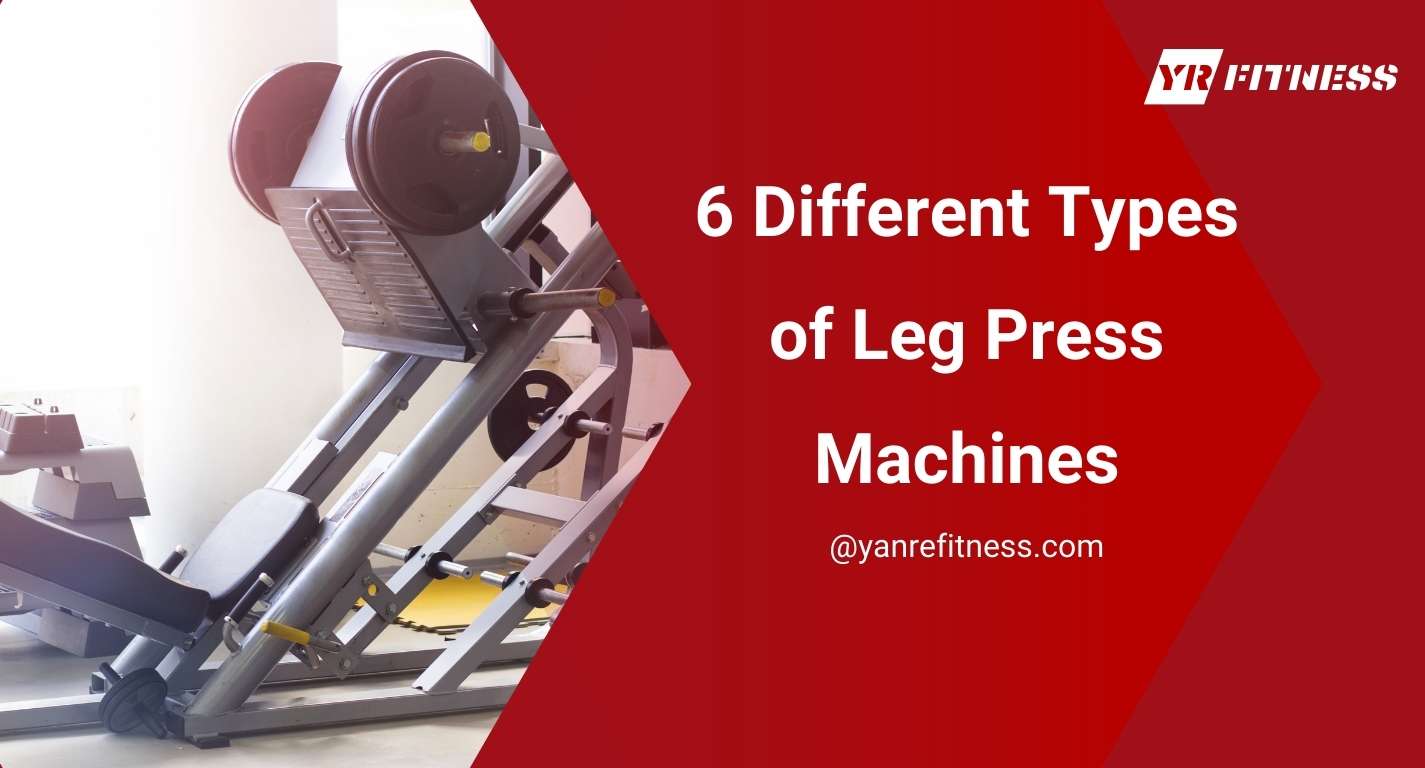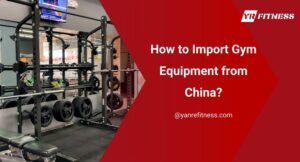Have you ever wondered what the best machine is for strengthening your lower body with maximum efficiency? Leg press machines offer a powerful solution that targets key muscles with precision and control.
With extensive expertise in fitness equipment, we’re here to guide you in selecting the best machines for your needs, based on industry knowledge.
Take a closer look at 2 popular leg press machines that can elevate your gym’s offerings:
- 45-Degree Leg Press Machine
- Horizontal Leg Press Machine
In this guide, you’ll learn about the six different types of leg press machines, their unique features, and how each can benefit your gym’s setup.
So let’s get started!
Table of Contents
1. Quick Comparison Chart
Leg press machines are essential for building leg strength, targeting muscles like the quads, hamstrings, and glutes. They offer a safe and effective way to train. Here are 6 types of leg press machines, their materials, uses, and specs:
Type of Machine | Materials | Uses | Specs |
45-Degree Leg Press Machine | Steel frame, cushioned seat | Ideal for intense leg workouts, great for strength building | Supports up to 1,000 lbs, compact footprint |
Horizontal Leg Press Machine | Steel frame, adjustable weight stack | Great for beginners, safe and easy to use | Adjustable resistance, space-saving design |
Vertical Leg Press Machine | Steel frame, padded backrest | Targets lower body with a smaller footprint | Supports up to 500 lbs, upright design for home or small gyms |
Cable Leg Press Machine | Cable system, steel frame | Provides smooth, adjustable resistance | Multi-function, adjustable for various exercises |
Hack Squat Leg Press Machine | Steel frame, angled backrest | Combines squat and leg press for full lower-body workout | Stable track, supports full leg engagement |
Leverage Leg Press Machine | Lever system, steel frame | Allows for heavier weightlifting with less impact on joints | Up to 1,000 lbs capacity, lever system for smooth motion |
2. 45-Degree Leg Press Machine
The 45-degree leg press machine is a popular choice in many gyms due to its angled design, allowing users to push weight along a 45-degree track. It’s widely used for building lower body strength and offers a controlled, safe workout experience. Here are some of the key benefits:
- Increased Muscle Engagement: The angled position allows for better targeting of key leg muscles. Turns out, this makes the machine ideal for users focused on building leg strength efficiently.
- Heavier Weight Capacity: With a 45-degree sled design, users can handle more weight compared to other machines. This is perfect for advanced lifters looking to challenge themselves.
- Controlled Range of Motion: The guided track provides stability and control over movements. This minimizes the risk of injury, making it suitable for beginners and experienced athletes alike.
3. Horizontal Leg Press Machine
The horizontal leg press machine allows users to push weight in a seated, horizontal position. This design provides a comfortable and controlled way to strengthen the lower body without placing too much stress on the spine. Key benefits include:
- Beginner Design: At YR Fitness, the seated position of the leg press machine makes it easy for beginners to use without much guidance. It’s an ideal option for those new to strength training or recovering from injuries, providing a safe and controlled workout environment.
- Controlled Weight Movement: The horizontal movement helps users maintain proper form. No wonder this reduces the chance of improper lifting techniques that could lead to injury.
- Lower Back Support: This machine offers great support for the lower back, making it safer for people with back issues. It also reduces the risk of strain compared to free weight exercises.
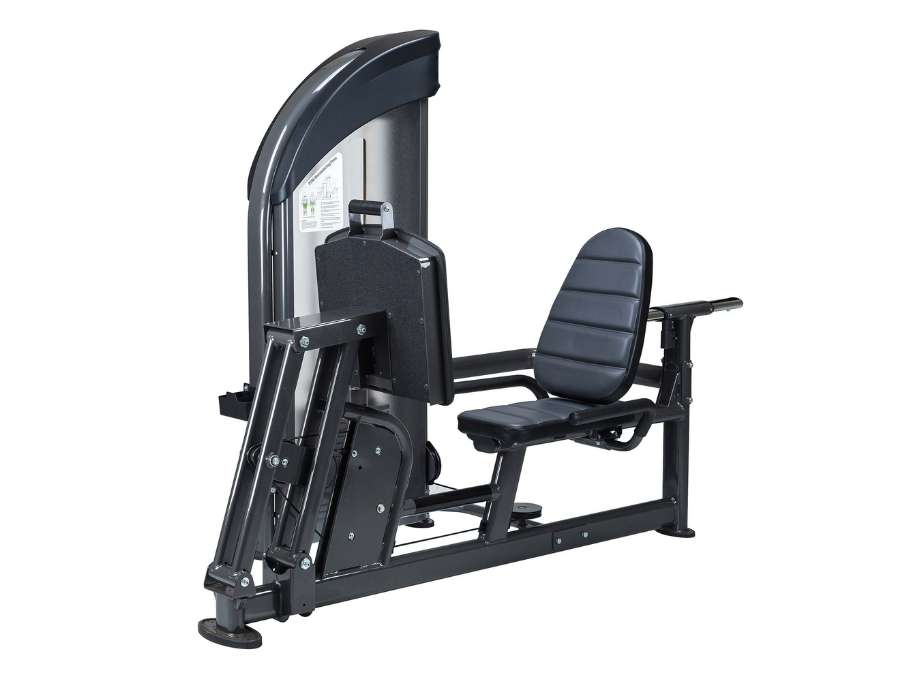
4. Vertical Leg Press Machine
The vertical leg press machine positions users horizontally while they push the weight upwards. Its vertical design makes it compact and different from standard leg machines.Below are some standout benefits include:
- Increased Leg Focus: By pushing the weight directly upward, the machine intensifies the focus on the quads muscles. This can lead to stronger leg muscles in a short amount of time.
- Compact and Powerful: Despite its smaller size, the vertical leg press still allows users to perform high-intensity leg workouts. It provides a solid challenge for both beginners and experienced lifters.
- Hip Support: The lying position helps support the hips throughout the movement. This makes it more comfortable for users with lower back concerns.
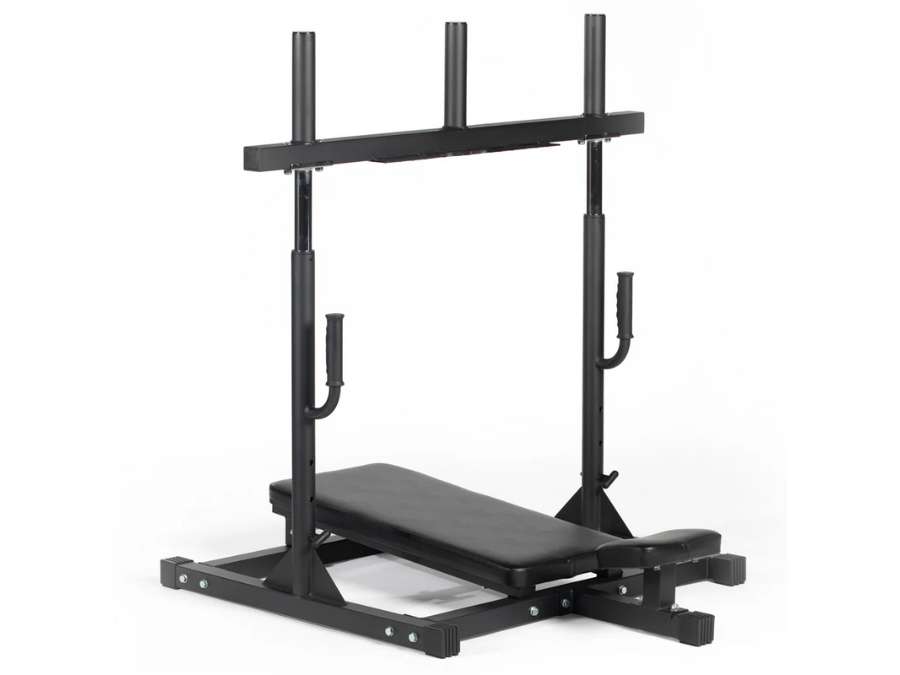
5. Cable Leg Press Machine
The cable leg press machine uses a pulley system to provide resistance for leg workouts. This type of machine is versatile and offers smooth, controlled movements for various strength levels. Here are some of the key benefits:
- Smooth Resistance Movement: The cable system maintains a consistent level of resistance throughout the exercise. This provides a more fluid and controlled workout experience, perfect for users of all skill levels.
- Adjustable Resistance Levels: Changing the resistance is quick and easy with a cable machine. This makes it ideal for users who want to switch between different weight loads without much hassle.
- Less Impact on Joints: At YR Fitness, the cable leg press is designed to be gentle on the knees and joints, making it an ideal option for those with joint issues. It’s a great choice for users who need a lower-impact workout while still targeting their leg muscles effectively.
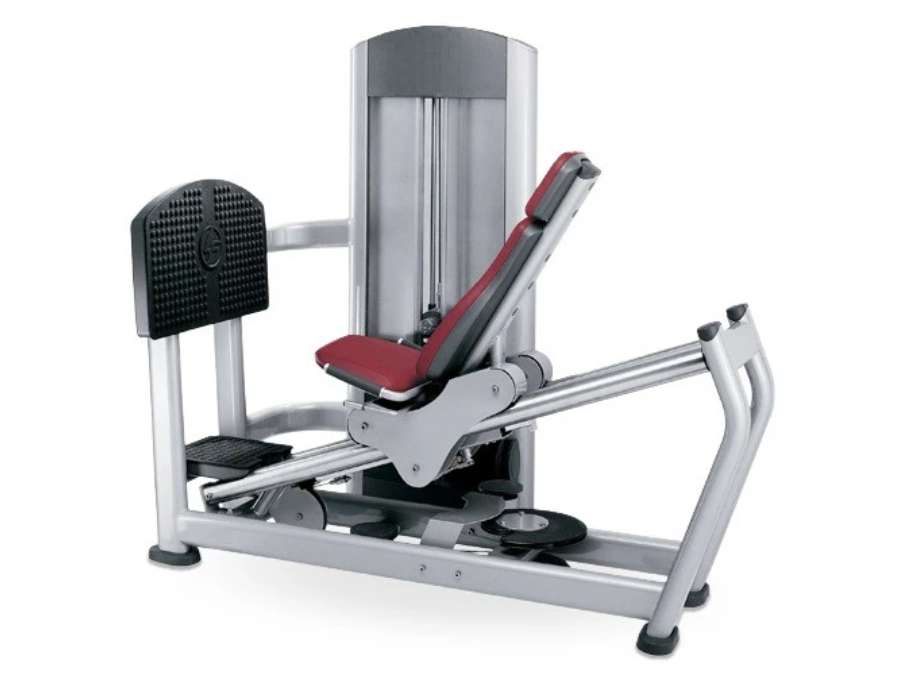
6. Hack Squat Leg Press Machine
The hack squat leg press machine combines the benefits of a squat and a leg press in one machine. It provides a controlled environment for performing squats while supporting the lower body. Here are some of the key benefits:
- Squat-Like Movement: This machine mimics the squat movement, focusing on building leg strength. It allows users to perform a safer squat without the need to balance free weights.
- Controlled Weight Lift: The machine’s design guides the weight along a fixed path. This provides stability and control, especially for beginners learning proper form.
- Full Lower Body Workout: It works not only the quads but also the glutes, hamstrings, and calf muscles, providing a full lower-body workout. This helps users build balanced strength in their legs.
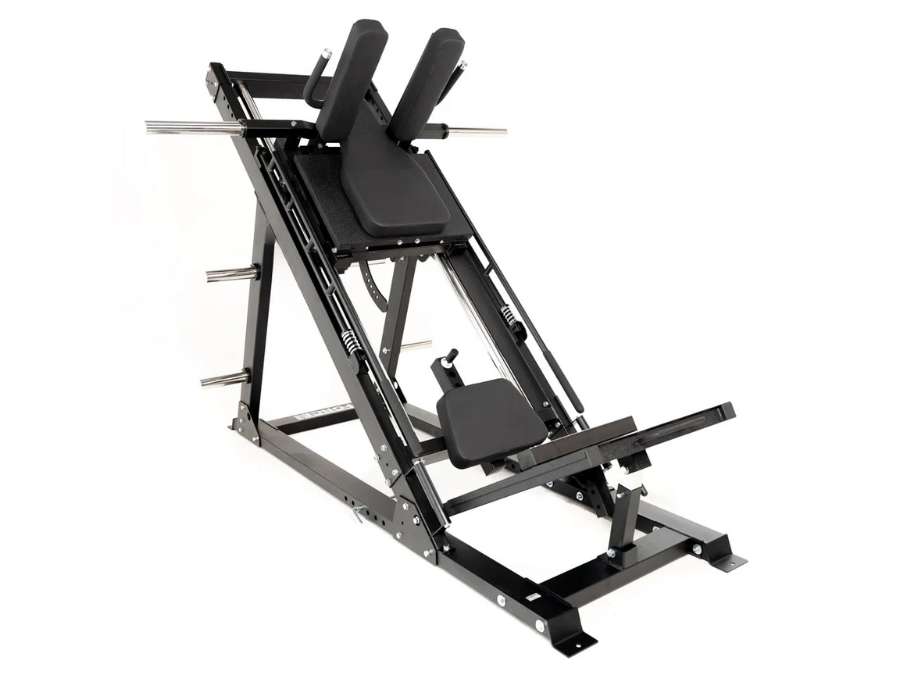
7. Leverage Leg Press Machine
The leverage leg press machine uses a lever system that allows users to lift weights with a controlled motion. It’s known for its smooth mechanics and ability to handle heavier loads. Here’s what makes this machine valuable:
- 1000lbs Capacity: This machine can support weight loads of up to 1,000 lbs, making it ideal for advanced lifters. It provides a challenging workout for those focused on building serious leg strength.
- Adjustable Foot Placement: With adjustable foot platforms, including platform shoes, which are becoming more popular, the platform shoes market is expected to reach USD 205.1 million by 2032, according to FMI. These features help users change their stance, making it easier to target different muscles and customize their workouts.
- Friendly Lifting: The leverage system reduces pressure on the knees and other joints. This makes it a safer choice for users with joint issues looking for an effective workout.
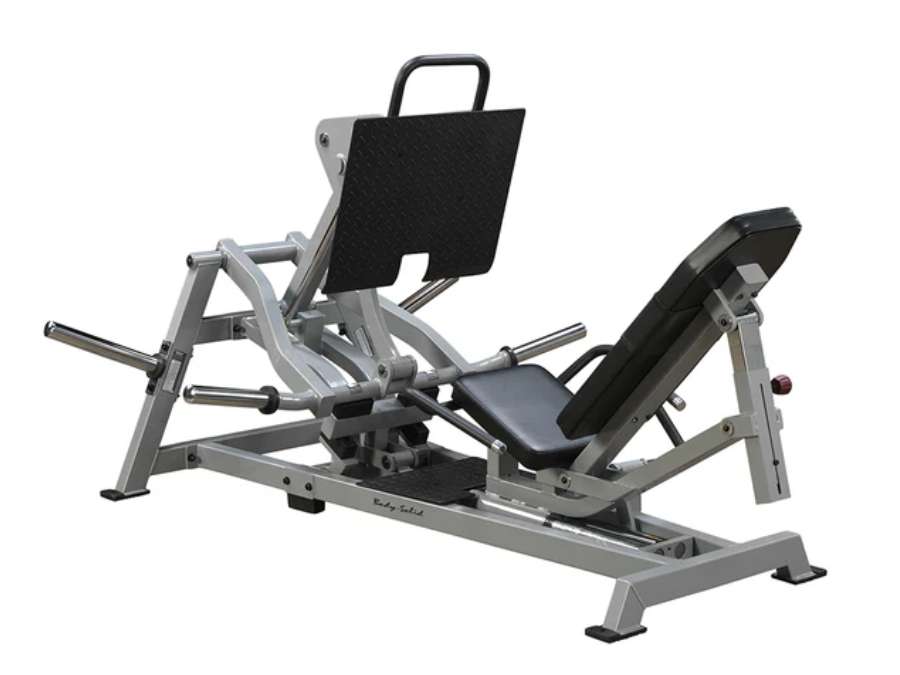
Conclusion
Leg press machines come in different types, each designed to target specific muscles and offer unique benefits to your workout routine. Whether you’re aiming to build strength or improve flexibility, choosing the right machine can help you achieve your fitness goals.
We hope this guide has been helpful in understanding the various types of leg press machines. If you’re looking for YR Fitness as a reliable manufacturer of leg press machines, feel free to visit our website at YR Fitness. Contact us today to learn more.
Dive Deeper Into Our Resources
Looking for more diverse product options? Browse through our handpicked selections:
For some insightful reads, we’ve curated a list of recommended articles just for you:
Still haven’t found what you’re looking for? Don’t hesitate to contact us. We’re available around the clock to assist you.
Related articles:
